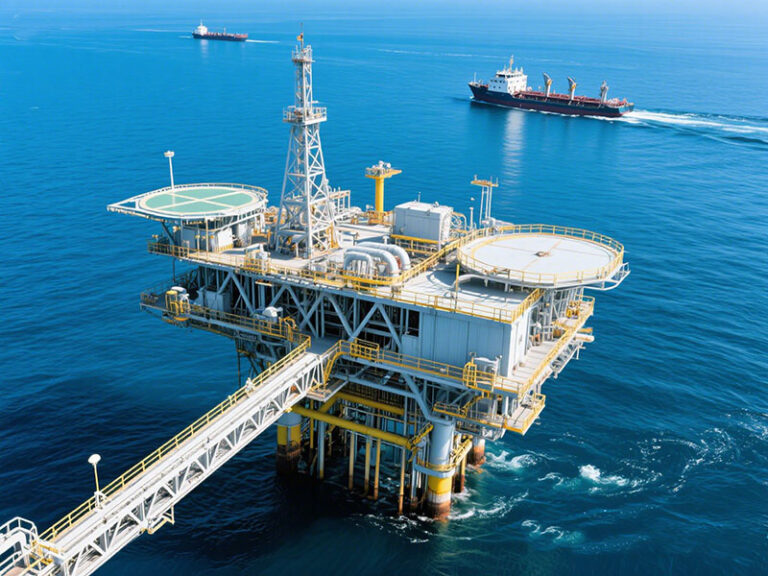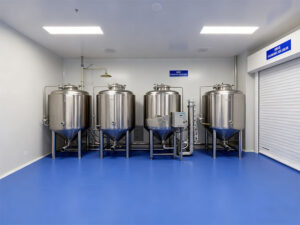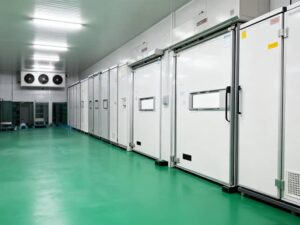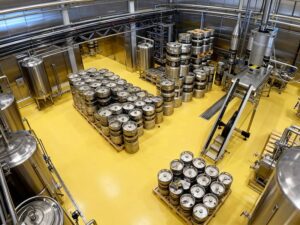I. Introduction
A. Importance of Zinc Primer Paint in Engineering Projects
In various engineering projects, the anti – corrosion of metal structures is a crucial part, and zinc primer paint plays an irreplaceable role. It has excellent anti – corrosion properties, which can effectively protect metal structures from the erosion of the external environment and extend their service life.
Take bridge engineering as an example. Bridges are exposed to the natural environment for a long time, bearing the influence of wind, sun, rain, and vehicle loads. Their steel structures are extremely prone to corrosion. Zinc primer paint can form a dense protective film on the steel surface, preventing the intrusion of oxygen, moisture, and harmful ions, thus slowing down the corrosion rate of steel. For some large – scale cross – sea bridges, such as the Hong Kong – Zhuhai – Macao Bridge, high – performance zinc primer paint is used for anti – corrosion coating, providing a solid guarantee for the long – term stable operation of the bridge.
For storage tanks, whether storing petroleum, chemical products, or other liquid substances, good anti – corrosion measures are required. Zinc primer paint can prevent the internal medium of the tank from corroding the tank body and also resist the influence of the external environment, ensuring the safety and reliability of the storage tank.
In marine engineering facilities such as offshore platforms and ships, zinc primer paint is even more indispensable. These facilities are in a high – humidity and high – salt marine environment for a long time, and the corrosion situation is more serious. The cathodic protection effect of zinc primer paint can effectively protect the steel and reduce the occurrence of corrosion, improving the durability of marine engineering facilities.
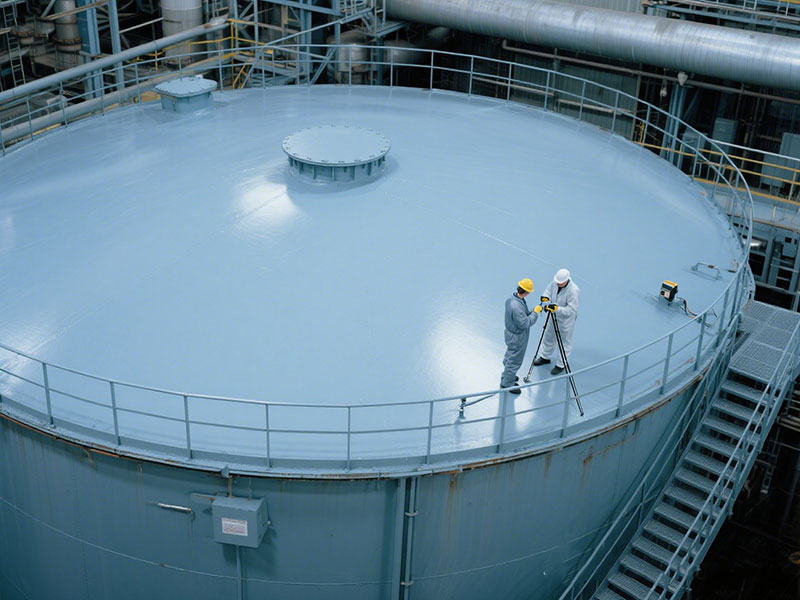
B. Relevance of Choosing the Right Primer
Choosing the appropriate zinc rich primer has a direct impact on the cost and lifespan of engineering projects. If the primer is not selected properly, it may lead to poor anti – corrosion effects, requiring frequent maintenance and replacement, which increases the project cost. Moreover, an inappropriate primer may also affect the quality and safety of the project and shorten the service life of the project.
Different engineering projects have their specific needs and requirements. Only by choosing a primer that meets these needs can the smooth progress of the project be ensured. For example, in some projects with high environmental protection requirements, zinc rich primers with low volatile organic compound (VOC) content need to be selected; in engineering projects in high – temperature environments, primers with good heat – resistant performance need to be selected.
II. Understanding Zinc Primer Paint
A. Composition and Working Mechanism
The main component of zinc primer paint is zinc powder. In addition, it also contains binders and additives. Zinc powder is the key component for zinc primer paint to play its anti – corrosion role, and its content is usually relatively high. In zinc primer paint, the electrochemical activity of zinc powder is stronger than that of iron. When the paint film is eroded, zinc powder, as the anode, will be corroded first, while the base steel, as the cathode, will be protected. This is the cathodic protection effect of zinc primer paint.
At the same time, zinc powder is gradually consumed in the process of protecting the substrate from erosion, and its corrosion products will seal the coating, strengthening the protection of the coating on the substrate. As time goes by, when the paint film is damaged, new metallic zinc will be exposed, generating a new and stronger cathodic protection effect. Therefore, the rust of zinc – rich paint will not spread from the damaged part of the paint film to the surrounding area.
The binder in zinc primer paint plays the role of binding zinc powder and other components together and enabling the primer to firmly adhere to the substrate surface. Common binders include epoxy resin, silicate, etc. Different binders will affect the performance and application scope of the primer.
Additives can improve certain properties of the primer, such as enhancing the weather resistance, wear resistance, and leveling property of the primer.
B. Types of Zinc Primer Paint
1. Organic Zinc Rich Primer
Organic zinc rich primers usually use epoxy resin as the binder, such as epoxy zinc rich primer. It has excellent cathodic protection, mechanical wear resistance, heat resistance, and a small burn – out area of the paint film during welding and cutting. Epoxy zinc rich primer dries quickly, has a relatively short recoating interval, good adhesion, is resistant to collision, can withstand heat up to 120°C, and can be matched with most topcoats (except alkyd paint, which will saponify). Therefore, it is a good primer choice in multi – coat systems.
In practical applications, epoxy zinc rich primer is widely used on the surface of steel after sandblasting, such as offshore drilling platforms, ships, petrochemical plants, bridges, storage tanks, power facilities, equipment, and steel structures. However, the corrosion resistance of organic zinc rich primer is slightly inferior to that of inorganic zinc rich primer. Its electrical conductivity is relatively low, so the cathodic protection effect is relatively weak; the acceptable chloride content is low, and the fine zinc oxide smoke generated during electric welding and cutting is relatively large, which is not environmentally friendly. However, its requirements for the pre – sandblasting treatment of the coated steel substrate are lower than those of inorganic zinc rich coatings, its mechanical collision resistance is better, and it is easier to match with topcoats, so it is also widely used.
2. Inorganic Zinc Rich Primer
Inorganic zinc rich primer uses inorganic substances such as silicate as the binder. It has long – term corrosion resistance, high hardness, wear resistance, weather resistance, heat resistance, solvent resistance, non – flammability, non – explosiveness, weldability, and zero VOC emissions. These characteristics make it increasingly widely used in many heavy – duty anti – corrosion fields, especially in the atmospheric and marine heavy – duty anti – corrosion fields, and it has been recognized by more and more industry insiders.
Inorganic zinc rich primer has strict requirements for the pre – treatment of the substrate surface. The coated substrate must be sandblasted to ensure its construction quality. Since its paint film is usually thin and easily affected by external environmental media, it is generally not used alone. It must be matched with appropriate intermediate paint and topcoat and reach the specified paint film thickness. For example, water – based inorganic zinc rich primer can be applied to oil tanks, oil cabins, solvent cabins, ballast water tanks, and marine steel structures, bridges, chimneys, etc. in harsh environments and conditions. It can also be used as anti – rust and heat – resistant paint.
3. Comparison of the Two Types of Primers
In terms of performance, the corrosion resistance and heat resistance of inorganic zinc rich primer are better than those of organic zinc rich primer, but the flexibility and construction performance of organic zinc rich primer are relatively better. In terms of substrate treatment requirements, inorganic zinc rich primer is more strict. In terms of cost, inorganic zinc rich primer is usually relatively more expensive due to its performance advantages. In terms of environmental protection, inorganic zinc rich primer has the advantage of zero VOC emissions, which is more in line with environmental protection requirements.
III. Factors to Consider When Choosing Zinc Primer Paint
A. Project Environment
1. Exposure to Weather Conditions
Different weather conditions put forward different requirements for the performance of zinc primer paint. In a high – humidity environment, moisture can more easily penetrate into the paint film, accelerating the corrosion of metal. Therefore, zinc primer paint with good water resistance and moisture – proof performance needs to be selected. For example, in the southern coastal areas where the air humidity is relatively high, zinc primer paint with strong water resistance, such as inorganic zinc rich primer or high – performance epoxy zinc rich primer, should be selected.
Temperature is also an important factor. In a high – temperature environment, the primer needs to have good heat – resistant performance to prevent the paint film from softening or falling off at high temperatures. Generally, inorganic zinc rich primer has better heat – resistant performance and can withstand higher temperatures. In a low – temperature environment, the curing speed of the primer will be affected. It is necessary to select a primer that can cure normally in a low – temperature environment or use a low – temperature curing agent.
Ultraviolet radiation can cause the paint film of the primer to age and powder, reducing its anti – corrosion performance. For engineering projects exposed to sunlight for a long time, such as outdoor steel structures and bridges, zinc primer paint with good ultraviolet resistance needs to be selected and matched with a topcoat with good weather resistance.
2. Contact with Chemical Substances or Corrosive Substances
If there are chemical substances or corrosive substances in the project environment, such as acids, alkalis, and salts, zinc primer paint with corresponding corrosion resistance needs to be selected. For example, in the storage tanks and pipelines of chemical enterprises, which may come into contact with various chemical media, zinc primer paint with strong chemical corrosion resistance should be selected. For an environment in contact with acidic substances, epoxy zinc rich primer with good acid resistance can be selected; for an environment in contact with alkaline substances, a primer with good alkali resistance needs to be selected.
B. Substrate Material
1. Different Metals and Their Compatibility with Zinc Primer Paint
Different metal materials have different requirements for zinc primer paint. For steel materials, zinc primer paint has good adaptability and adhesion, and can provide effective cathodic protection. However, for some metals with smooth surfaces, such as stainless steel and aluminum alloy, it is difficult for zinc primer paint to adhere to their surfaces, which may easily lead to the peeling of the paint film. In this case, a primer specifically designed for these metals needs to be selected, or the metal surface needs to be specially treated to improve the adhesion of the primer.
2. Surface Condition and Pretreatment Requirements
The surface condition of the substrate has an important impact on the anti – corrosion effect of zinc primer paint. Before applying the primer, the substrate surface needs to be pretreated to remove oil, rust, and oxide scale, etc., so as to improve the adhesion between the primer and the substrate. For steel substrates, sandblasting is usually used to reach the Sa2.5 level standard, and the surface roughness is between 30 – 75 microns. For substrates with poor surface conditions, more thorough treatment is required to ensure that the primer can firmly adhere.
C. Project Specifications
1. Coating Thickness and Film Build Requirements
Different engineering projects have different requirements for coating thickness and film build. Coating thickness directly affects the anti – corrosion effect and service life of the primer. Generally speaking, the greater the coating thickness, the better the anti – corrosion effect, but the cost will also increase accordingly. When determining the coating thickness, comprehensive consideration should be given according to the specific situation and requirements of the project. For example, in some marine engineering projects with high anti – corrosion requirements, the coating thickness may need to reach a certain standard to ensure the effective protection of steel in the long – term marine environment.
2. Adhesion and Flexibility Requirements
Adhesion is an important performance indicator of zinc primer paint, which is directly related to the bonding strength between the primer and the substrate. Good adhesion can ensure that the primer will not fall off during use, thus guaranteeing the anti – corrosion effect. For some engineering projects subject to external forces such as vibration and impact, the primer also needs to have a certain degree of flexibility to prevent the paint film from cracking when subjected to stress.
D. Application Method
1. Brush, Roller, or Spray Application
Different application methods have a certain impact on the performance and construction effect of zinc primer paint. Brush application is suitable for small – area coating, with simple operation, but low construction efficiency and it is easy to have uneven brushing. Roller application has a relatively higher construction efficiency, but roller marks may also occur. Spraying is a commonly used construction method, which can obtain a uniform and dense coating, but requires professional equipment and technology.
2. Impact of Application Method on Primer Performance
The spraying method can make the primer better cover the substrate surface and improve the quality and anti – corrosion effect of the coating. However, during the spraying process, parameters such as the pressure, angle, and distance of the spray gun need to be noted to ensure the uniform thickness of the coating. Brush and roller application may cause air to remain in the primer, affecting the performance of the coating. Therefore, when choosing the application method, reasonable selection should be made according to the specific situation of the project and the characteristics of the primer.
IV. Assessing Specific Project Needs
A. Identifying Project Goals
1. Required Level of Anti – Corrosion Protection
Before choosing zinc primer paint, it is necessary to clarify the required level of anti – corrosion protection for the project. According to the environment and usage requirements of the project, the anti – corrosion protection level can be divided into three levels: mild, moderate, and severe.
For mild corrosion environments, such as indoor environments and steel structures in rural areas, zinc rich primer with relatively low zinc content, such as 60% zinc – content epoxy zinc rich primer, can be selected and matched with corresponding intermediate paint and topcoat. For moderate corrosion environments, such as steel structures of buildings in coastal areas and pipelines in petrochemical plants, 70% zinc – content epoxy zinc rich primer is suitable to provide better cathodic protection. In severe corrosion environments, such as offshore platforms and port facilities, 80% zinc – content epoxy zinc rich primer with relatively high zinc content should be selected and matched with high – performance intermediate paint and topcoat to ensure long – term anti – corrosion effects.
2. Aesthetic Requirements
In addition to anti – corrosion performance, some projects also have certain aesthetic requirements for the appearance. For example, in some urban buildings, bridges, and other projects, the primer needs to have good decorative properties and be coordinated with the surrounding environment. In this case, zinc primer paint with uniform color and good gloss can be selected and matched with an aesthetically pleasing topcoat.
B. Analyzing Project Constraints
1. Budget Limitations
Budget is an important factor to consider during project implementation. The prices of different types and qualities of zinc primer paint vary greatly. When choosing a primer, reasonable selection should be made according to the project budget. On the premise of ensuring the anti – corrosion effect, a cost – effective primer product can be selected. For example, if the budget is limited, epoxy zinc rich primer with moderate zinc content can be selected, and the coating scheme can be optimized to reduce the cost.
2. Time Constraints
The time constraints of the project will also affect the choice of primer. If the project construction period is short, a primer with fast drying speed and high construction efficiency needs to be selected. For example, some fast – drying epoxy zinc rich primers can complete coating and curing in a relatively short time to meet the project progress requirements.
V. Case Studies
A. Successful Projects Using Zinc Primer Paint
1. Cases of Different Engineering Projects
- Bridge Engineering: Taking a large – scale cross – sea bridge as an example, the bridge uses a coating system of epoxy zinc rich primer + epoxy micaceous iron intermediate paint + fluorocarbon topcoat. Epoxy zinc rich primer provides good cathodic protection for the steel structure of the bridge, effectively preventing the corrosion of steel. Epoxy micaceous iron intermediate paint increases the thickness and shielding performance of the coating, further improving the anti – corrosion effect. Fluorocarbon topcoat has excellent weather resistance and decorative properties, making the bridge look beautiful and also able to resist the erosion of ultraviolet rays and the atmospheric environment. After years of use, the steel structure of the bridge still remains in good condition, proving the effectiveness of this coating system.
- Building Engineering: In the anti – corrosion project of the steel structure of a high – rise building, 70% zinc – content epoxy zinc rich primer is selected. This primer has good adhesion and anti – corrosion performance and can adapt to various environmental conditions during the building construction process. During the construction process, the coating process is strictly followed to ensure the quality of the primer. After a period of use, there is no obvious corrosion on the steel structure, providing a guarantee for the safety and durability of the building.
- Industrial Facility Engineering: The storage tanks of a petrochemical plant are coated with inorganic zinc rich primer for anti – corrosion. The high hardness, wear resistance, solvent resistance, and chemical corrosion resistance of inorganic zinc rich primer enable it to effectively protect the storage tanks from the erosion of internal media and the external environment. During years of use, there have been no problems such as corrosion and leakage in the storage tanks, ensuring the safe production of the petrochemical plant.
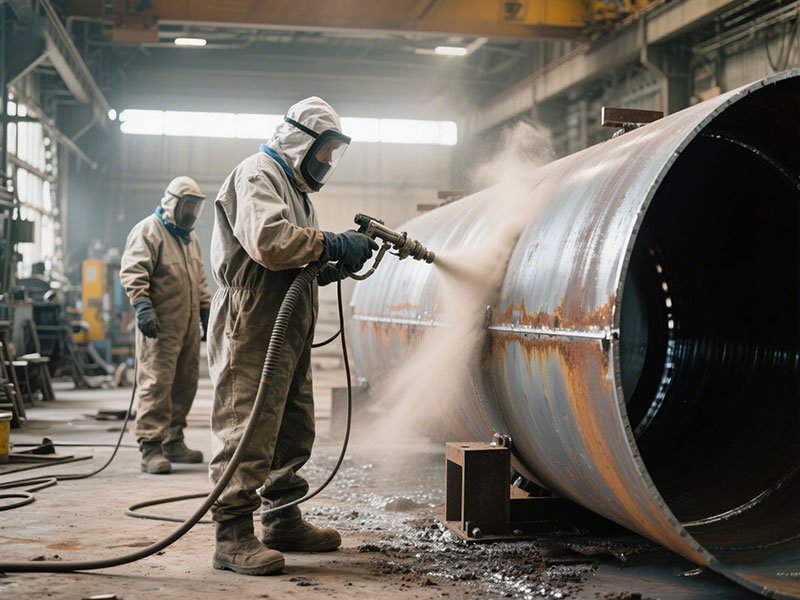
2. Contribution of Correct Primer Selection to Project Success
In these successful projects, the correct selection of zinc primer paint plays a key role. A suitable primer can provide effective anti – corrosion protection according to the specific needs and environmental conditions of the project, extend the service life of the project, and reduce the maintenance and replacement costs. At the same time, a good primer selection can also ensure the quality and safety of the project and improve the overall benefits of the project.
B. Lessons Learned from Failed Projects
1. Consequences of Incorrect Primer Selection
In some projects, incorrect primer selection has led to serious consequences. For example, in a steel structure building, an unsuitable zinc primer paint is used. Due to the insufficient adhesion between the primer and the substrate, the paint film peels off after a period of use. The steel is exposed to the air and corrodes quickly. This not only affects the appearance of the building but also reduces the safety of the building. It is necessary to re – coat, which increases the project cost and construction period.
2. How to Avoid Similar Problems in Future Projects
To avoid similar problems in future projects, sufficient research and analysis are required when choosing zinc primer paint. First, a comprehensive understanding of the project environment, substrate, specifications, and other factors is needed to clarify the project requirements. Second, a primer product with reliable quality and good reputation should be selected, and the product instructions should be strictly followed during construction. At the same time, quality control and inspection should be strengthened during the construction process to ensure the quality of the primer coating.
VI. Conclusion
A. Summary of Key Points
When choosing zinc primer paint, multiple factors need to be comprehensively considered. The project environment, including weather conditions and contact with chemical substances, will affect the performance and durability of the primer. Therefore, zinc primer paint with corresponding weather resistance and chemical corrosion resistance should be selected according to the specific environment. The type and surface condition of the substrate material are crucial for the adhesion of the primer. Different metals require the selection of appropriate primers, and good surface pretreatment is necessary. Project specifications such as coating thickness, adhesion, and flexibility requirements also determine the direction of primer selection. The application method will affect the construction effect and performance of the primer, and reasonable selection should be made according to the actual situation.
At the same time, project goals should be clarified, the required level of anti – corrosion protection and aesthetic requirements should be determined, and the best primer selection should be made in combination with the project budget and time constraints. In practical applications, the experience of successful projects and the lessons of failed projects should be learned to ensure that the selection and use of the primer can meet the project requirements.
It is hoped that through the introduction in this article, it can help customers with engineering projects make more informed decisions when choosing zinc primer paint. When facing specific projects, it is recommended that customers fully communicate with professional paint suppliers and construction teams to obtain more technical support and suggestions. At the same time, the coating process should be strictly followed, and quality control should be strengthened to ensure that zinc primer paint can play the best anti – corrosion effect and provide a guarantee for the long – term stable operation of engineering projects. If any problems are encountered during the primer selection process, please feel free to consult us, and we will provide you with more detailed solutions.
